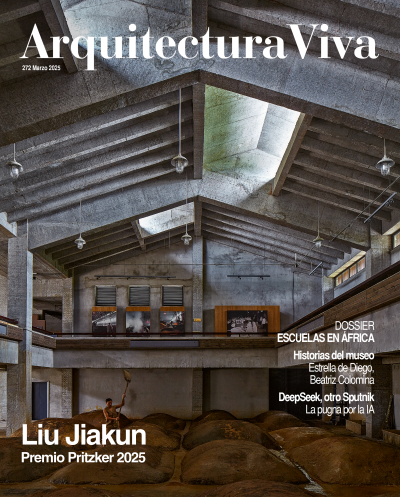

Erected after the devastating earthquake that struck Wenchuan – a county in China’s Sichuan province – in 2008, this memorial honors Hu Huishan, a 15-year-old high-schooler who perished in the cataclysm. The pavilion’s shape recalls the emergency ten
Located at the foot of some old caverns used for the storage of liquors, a new facility makes it possible to immerse oneself in the mountainous site and get close to them. Thought out to establish a connection with both the slope and the views of the
The declining environs of two temples have been revitalized through the insertion of new community programs, which punctuate a picturesque succession of courtyards and covered galleries. A museum, a hotel, a café, and a bookstore fit themselves into
The paving stones that were used in the Forbidden City in Beijing came from a manufacturing plant whose centenary history is presented by premises that explore the poetics of baked brick. The museum features a marshy park, fenced in like traditional
The facilities of the oldest Chinese distillery still in operation are surrounded by new production buildings with pitched roofs, where traditional fermenting and liquor-making practices are perpetuated. A courtyard connects the various volumes, whos
New additions to the Jianchuan museums, which house the country’s largest private collection, are three interconnected pavilions harboring the memory of the Cultural Revolution. Like temples in bustling areas, the galleries showing historical items a
Used to visiting architecture exhibitions in which buildings are interpreted through plans, drawings and models, the organizers of this event – CIPEA, China International Practical Exhibition of Architecture – tried to make a change and show building
The site chosen to build this community center is a plot with a gentle slope towards the lake, to which it is adjoined at the point where it forks. The building makes up for its large size (10,000 square meters) with a strategy of fragmentation into
When, after a period of meditation and reflection, prince Siddhartha decided to extend his doctrine to the rest of humankind, he preached his first sermon in Deer Park near Benares. In Chinese, the word ‘luye’ literally means ‘a field with deer’ and,
Chinese architect Liu Jiakun wins Pritzker 2025 Born in 1956, Liu Jiakun lives and works in his native city, Chengdu, capital of the province of Sichuan in southwest China, where he opened his practice in 1999. He grew up in a family of physicians, b
Pritzker Prize 2025. Our magazines had barely published flashes of the exquisite and silent work of Liu Jiakun, an architect who at the outset was keener on persevering in his career as a novelist than on mastering the art of building. But in the hea
A country where private practice of the architectural profession was prohibited until the 1980s can congratulate itself for having already landed two Pritzkers. Like the 2012 winner Wang Shu, Liu Jiakun represents a China much at odds with that of ge
As a first foray outside Britain for the Serpentine Gallery's hugely successful series of temporary pavilions, a row of 38 steel rods pulled taut by cables...
The Beijing joint exhibition of ten years of work of MADA s.p.a.m., Jiakun Architects and Urbanus and the seminar held in March 2010 were a landmark event for Chinese contemporary architecture in recent years. The three firms have built mainly in fiv

